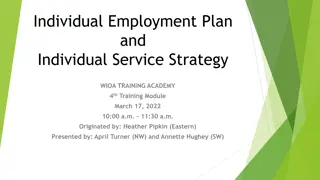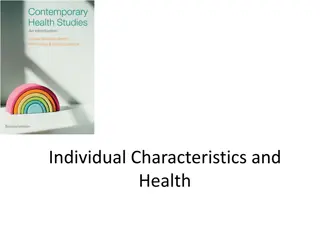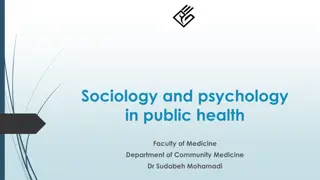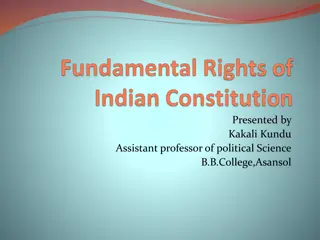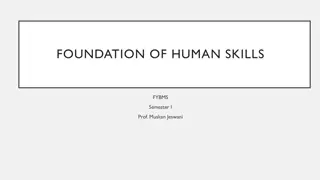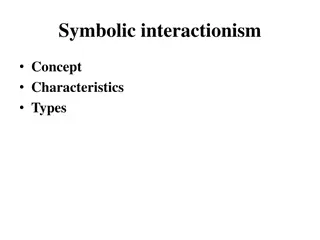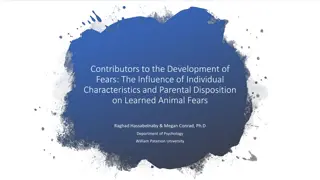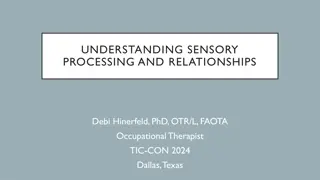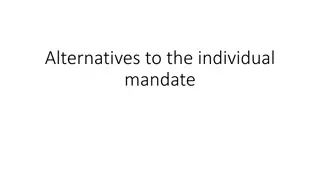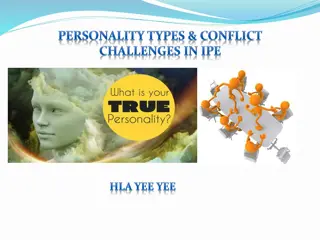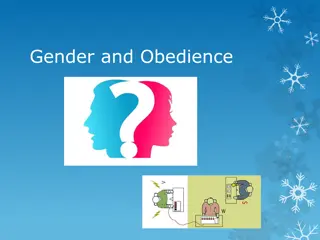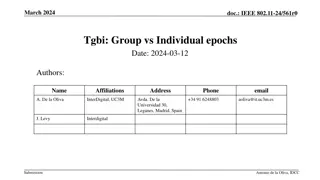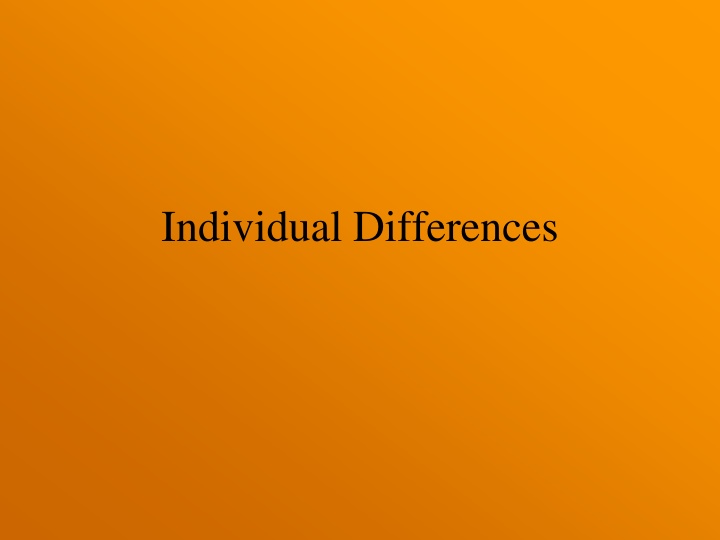
Consumer Behavior: Resources and Knowledge for Marketing Success
Dive into the world of consumer behavior with a focus on individual differences, economic and temporal resources, cognitive abilities, and knowledge types. Explore how consumers process information, make purchasing decisions, and interact with products and brands.
Download Presentation

Please find below an Image/Link to download the presentation.
The content on the website is provided AS IS for your information and personal use only. It may not be sold, licensed, or shared on other websites without obtaining consent from the author. If you encounter any issues during the download, it is possible that the publisher has removed the file from their server.
You are allowed to download the files provided on this website for personal or commercial use, subject to the condition that they are used lawfully. All files are the property of their respective owners.
The content on the website is provided AS IS for your information and personal use only. It may not be sold, licensed, or shared on other websites without obtaining consent from the author.
E N D
Presentation Transcript
Consumer Resources Economic Temporal Cognitive
Economic Resources Income Disposable Income GDP Whose income? Where is the income? Consumer Confidence Who has the buying power? Targeting the up market, affluents Targeting the down market
Temporal Resources You have only 24 hours in a day Scarcity creates value. For affluents, their chief concern is buying more time than products. Work and leisure Paid time, obligated time, discretionary time
Use of temporal resources Time using goods Time saving goods Polychronic use of time Time prices Time is precious- make best use of it
Cognitive Resources The mental capacity available for undertaking various information processing activities Capacity chunks of information that can be handled by consumers at a time Attention allocation of cognitive capacity. Depends on direction and intensity
Knowledge What do consumers know? Companies are constantly sending out information to consumers with the hope that such information shall be accepted and acted upon We need to know their product knowledge, their purchase knowledge, their price knowledge and their usage knowledge
Types of knowledge Declarative Procedural
Declarative knowledge Episodic (when did you last buy?) Semantic (general knowledge that is useful to all)
Procedural knowledge How to use such factual information
Product knowledge Awareness of the product category and brands within the the product category Product terminology Product attributes and features Beliefs about the product category in general and specific brands
Purchase knowledge Where to buy? When to buy?
Usage knowledge What is it for? How to use?
Usage knowledge What is it for? How to use? Consumers without usage knowledge may be reluctant to buy or use the product. Inadequate usage knowledge may lead to consumer dissatisfaction because of improper usage or consumption
Price Knowledge Marketers would be more motivated to hold prices down and respond to price cuts when they believe consumers are knowledgeable about the prices charged in the market.
Organisation of Knowledge Associative network memory consists of a series of nodes and links. A link between two nodes forms a belief or proposition. Schema these beliefs or propositions can be combined to create a higher order knowledge structure Scripts- contains knowledge about temporal action sequences that occur during the event
Measurement of knowledge Objective Subjective Both these measures are important for the marketer to determine what additional inputs to be provided for the consumer to facilitate decision making
Attitudes Consumer likes and dislikes The barriers to success become smaller as a segment s liking for a product grows larger
Attitudinal Behaviour Feelings Beliefs Attitudes Behavioural Intention Behaviour
Attitudes are at three levels Cognitive Affective Conative
Properties of attitudes Attitudes can vary along dimensions. This is called valence. It can be +ve, -ve orneutral. Attitudes can differ in their extremity. Attitudes can also differ in their resistance. Attitudes can also have persistence. Not all attitudes are held with the same degree of confidence.
The affective component of attitude Speeds up information processing and cuts down search time Recall of products with positive associations Emotions can serve to activate a state of drive
Attitude models Fish-bien Model Ideal Point Model
Fishbien Model Probably the most popular model to explain consumer attitudes i = n A = biei i = 0 Where A = attitude toward the object bi = strength of belief that the object has attribute i ei = evaluation of attribute i n = no. of salient attributes
Ideal Point Model i = n A = Wi | Ii Xi | i = 0 Where, A = attitude towards brand Wi = importance of attribute i Ii = the ideal performance on attribute i Xi= belief about brand s actual performance on attribute i n = no. of salient attributes
Brand Attitudes Cognitive (awareness, comprehension, knowledge) Affective (evaluation, liking, preference) Conative (purchase, trial) Attitudes decay over time. Therefore +ve attitudes need to be nurtured and sustained. Attitudes can be examined at three levels Physical Pseudo-physical Benefits physical and psychological
Attitude Segments % of total market 4 Marketing efforts 3 5 2 6 Competitive efforts 1 7 -ve +ve Attitude
Ad attitudes Attitude towards an ad (liking) provided an impact on brand attitudes over and above the ability of the ad to communicate attribute information Andrew Mitchell, Jerry Olsen and Terence Shrimp Ad disliking has a greater effect than ad liking. The effect of ad liking are more important for mood ads than for hard-sell ads McCollum and Spielman
Motivation A person can be said to be motivated when his/her system is energised (aroused) , made active, and behaviour is directed towards a certain goal.
Dynamics of the motivation process Need activated or felt when there is a sufficient discrepancy between a desired or preferred state of being and the actual state. Drive as this discrepancy increases, the outcome is activation of a condition of arousal
Self concept Ideal self Real self Self in context Extended self
Self Expression Transcedence Self-monitoring Fantasy Self gift-giving
Transcedence Our possessions are a reflection of the our self-concept. This allows us to transcend our self into our possessions
Self monitoring Concern for social appropriateness in behaviour Attention to social comparison as cues for appropriate self expression Ability to modify self presentation and expression across situations
Fantasy Comparison with real self and ideal self
Self gift - giving Bolsters self esteem through an indulgence justified by deserving behaviour
Some pointers for marketing strategy Interpret research with caution Be alert to the possibility of motivational conflict Be prepared to provide socially acceptable reasons for choice Exercise caution when marketing cross- culturally
Personality Consistent responses to environmental stimuli
3 approaches to studying Personality Psychanalytic Theory Soco-psychological Theory Trait Factor theory
Psychoanalytical theory This is the dynamic interaction of the elements of the human personality system-id, ego and superego, results in unconscious motivationsthat are manifested in human behaviour
Socio-Psychological Theory This recognises the interdependence between individual and society. Social variables rather than biological instincts are determinants in shaping personality. Behaviour is directed to meet those needs
Trait factor theory An individual s personality is composed of definite predispositional attributes called traits. A trait is any distinguishable, relatively enduring way in which individuals differ from one another.
Research has shown so far that consumer selection of products based on personality has been a poor predictor, only slightly better than by chance Whereas, brand personality has been a better predictor and influence in making consumer selections
Personality can help explain how consumers would behave at various stages of the decision making process Therefore, learning styles, need for cognition, risk taking, thrill seeking and self-monitoring are better indicators of personality and what impact it would have on behaviour
Personal values Values provide another explanation of why consumers vary in their decision making. Values express the goals that motivate people and appropriate ways to achieve those goals
Values can be Personal Normal behaviour for an individual Social Normal behaviour of society A lot of our personal values can get impacted by social values.




